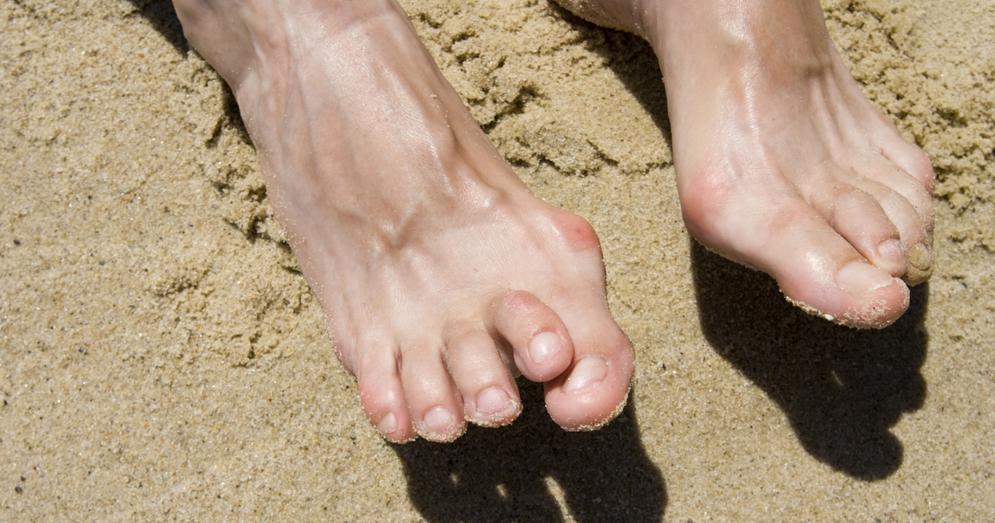Hammertoe is a condition in which the muscles and joints of a toe get out of balance. This then causes the middle joint of the toe to buckle, making the toe look like a hammer. About 7 million American adults have the condition, and it most commonly develops in the second, third, or fourth toes.
While a hammertoe itself may not cause pain at first, a painful corn could form on the top of your toe due to rubbing it against your shoes and socks. Corns can cause redness, inflammation, and swelling.
Left untreated, hammertoe can continue getting worse and eventually limit movement in the toe. Hammertoe might also cause you to change the way you walk so as not to put pressure on the affected toe, which could lead to pain in other areas that take on the added force.
The good news is that you have options when it comes to treating hammertoe. David B. Glover, DPM, FACFAS, and our team at Mountain View Foot & Ankle Institute offer both conservative and surgical care for hammertoe.
If you have a hammertoe, your treatment plan could include a combination of measures. Some of the most effective ways we treat hammertoe include the following:
1. Cushioning, taping, and changing shoes
Using pads designed for corns and calluses may be able to help cushion sore spots on your feet. And splinting or taping may be able to correct bent toes. Dr. Glover can help you find corn pads and teach you how to use them for the best results.
Furthermore, Dr. Glover may recommend that you change your footwear. Shoes that pinch your toes, such as pointed-toe shoes and high heels, should be avoided. Instead, you should wear shoes with wide toe boxes.
2. Custom orthotics
Orthotics are shoe inserts that help provide foot support. If you have hammertoe, Dr. Glover may recommend wearing custom orthotics to help correct muscle and tendon imbalances.
Custom orthotics are designed just for your feet, and they fit into regular shoes. Orthotics can be very effective in relieving hammertoe pain and preventing other foot complications from developing, especially if you have diabetes.
3. Exercises
Hammertoe is often caused by muscle imbalances in the foot, so Dr. Glover may recommend doing targeted exercises — such as toe curls — to help build back strength. This, in turn, may help reduce hammertoe discomfort. Furthermore, stretching your toes may also help release tension.
4. Anti-inflammatory medications
Inflammation is one of the biggest reasons why hammertoe hurts, so taking nonsteroidal anti-inflammatory medications (NSAIDs) may help relieve discomfort. Dr. Glover may recommend taking NSAIDs when you feel pain flare up, such as after a long day on your feet.
5. Hammertoe surgery
If conservative measures don’t relieve your pain, Dr. Glover may recommend hammertoe surgery. Dr. Glover performs minimally invasive hammertoe surgery, but the specific procedure would depend on your condition. In general, the goal of surgery is to release the rigid soft tissues to allow the toe to relax and thereby relieve the discomfort.
You don’t have to live with hammertoe pain. To get the care you need, book an appointment online or over the phone with Mountain View Foot & Ankle Institute today.

